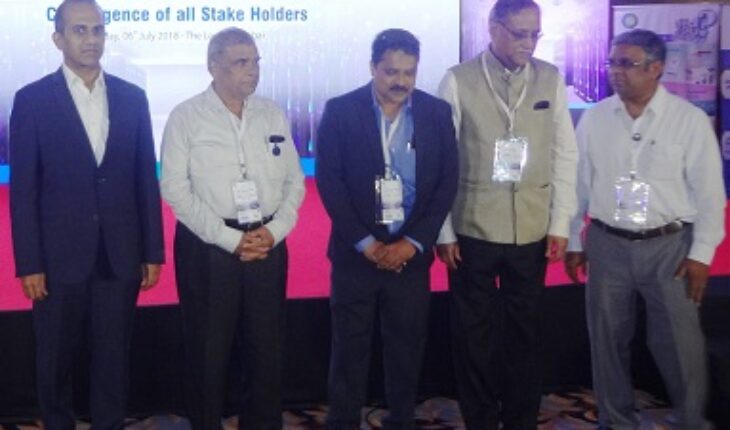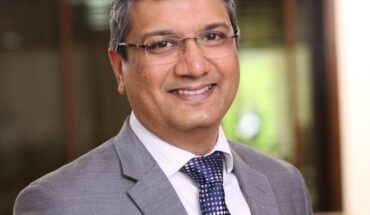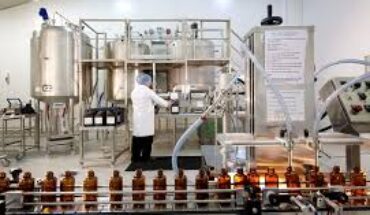The need for focus on bolstering an infrastructure for Data Centres — where ‘energy efficiency is a core concern’ — was highlighted at the Indian Society of Heating, Refrigeration & Air Conditioning Engineers (ISHRAE) flagship “Symposia” themed ‘All about Data Centres – Convergence of All Stake-Holders’ here recently.
“Make in India needs to be complemented by research in India and dissemination of knowledge is our prime objective through: ISHRAE App on phone (for 15,000 pan-India ISHRAE members); Certification courses in: Design (11 days), (Service Engineer-4 days), and Certificate for ISHRAE-certified Professional, “Clean Room Professionals “ (cleaning rooms of bacteria-4 days) and CAD Operators (6-days),” said Sangita Jhangiani, President, ISHRAE Mumbai Chapter.
“HVAC is a maximum energy-guzzler and we are focusing on better refrigeration where, even as load is going up, we are researching on how to reduce consumption through methods such as “Free Cooling” in which outside temperature is say 10 degrees and Internal is 24 degrees using a filter for +Adiabatic+ cooling (same principle in Desert Cooler),” she said, adding “In Eco-friendly technology, we have a Research Promotion cell (and collection box for research promotion) started one year ago that resulted in four initiatives, while we want to bring ‘equipment-testing facilities’ – which are abroad – to India.. To prevent affecting the Ozone layer, we are looking at different types of viable refrigerants and catalysts.”
Murari Sinhal, Group Sr. Vice-President, Reliance Industries Ltd, said Data Centres are growing exponentially by 24% annually at Rs 7,000 crore in India and there is a need for all stakeholders to focus on “Effective Power Utilization” (PUE), which plays an important role through related ‘Server Rate Designers’ and ‘Air-cooling System Designers.’ “Reliance has achieved 1.4 PUE and refrigeration engineers need to concentrate on this with Data Centre designers,” he said.
Prakash C. Lohia, Sr. Vice-President (Power & Utility), Reliance Industries ltd., noted that transactions of daily needs used lots of data storage, that called for huge power requirements alongside building and designing Data Centres equipment in the most energy-efficient manner.
Sanjeet Sandhu, Vice-President , Data Centre Regional Application Centre International IT Division, Schneider Electric, said businesses are critically reliant on IT and digital traffic is expected to triple by 2020 to 50 billion connections. “Many data centres are being built and running up big bills, even as we see SMART CITIES being built and computing power being brought to the Edge of Data Network,” he said, while pointing out that Distribution Centres are seeking strategic locations for their equipment and business-owners wanted good IT performance.
“IOT and Digitization requires visibility and we believe that IOT in the CLOUD is required to remotely connect and analyze. The solution is in the Eco-structure of IT for data centres and IOT-enabled platforms, Eco-structure for data centres for Asset Performance, productive analysis and application development. It’s Edge computing emerging as data centres are increasingly connected,” he said, adding “There are great benefits to moving to CLOUD-based systems. Edge Systems also have benefits like Centralised Cloud Data center being connected to Edge Data Center.”
Speaking on +Future Trends in Data Centre Cooling/Micro DC,+ Suresh Balakrishnan, Stultz-CHSPL (India) Pvt Ltd., said a traditional Data Centre occupied about 250 to 100,000 sq. metres area. “However, quantum of data doubling fast and digital traffic expanding highlighted the need for scaling digital infrastructure to meet upto “8.6 Zetabytes of IP traffic,” as technology drivers like “Industry 4.0” linked markets, businesses and Societies in which 18% manufacturers plan to move to “pure science-based” business model,” he said.
“The value of such added revenue will be US$ 600 billion by 2020, in which 50% of related products will be ‘smart’ and connected by then. About 50 billion devices will be used in ‘Internet of Things’ (IoT) in which millions of sensors and devices are continuously producing data. Edge Computing — which is a mesh network of Micro Data Centres that bring bandwidth-intensive contact (IoT) closer to the User or Data Source in a footprint less than 100 Sq. Ft. — needs a ‘localized” Data Centre.”
“Micro Data Centres are enablers of the future; with rapid deployment in 6-8 weeks of ordering; decreasing real estate costs due to compact design; and occupying 1/10th of space compared to conventional data centres. The future trends in data centre cooling is “Liquid to Chip cooling” though the problem lies in power consumption for ‘high-performance computing’ operations like; Supercomputers, Automotive, Biomedical, Government, University, Oil&Gas, Financial etc,” he added.
Meanwhile, ISHRAE – with 12,000 members comprising HVAC&R engineers across 41 cities in in India — is disseminating knowledge of HVAC&R through certified training courses with Symposia being one such event, while Sustained Technical Excellence in Advocacy & Research is its theme for 2018.
Describing optimized energy usage in data centres as a major challenge for all companies as the data centres are running on redundant power and cooling systems that consume lot of energy,” C Subramaniam Mani, National President, ISHRAE, said “Companies are seeking solutions in strategically managing energy and making data centres energy-efficient alongside reducing power costs.
“The need of the hour is “Adaptive Thermal Comfort” and burgeoning population means energy consumption growth that will exhaust power resources. Symposia 2018 is one such program designed by the ISHRAE Mumbai Chapter with emphasis on the prominent issue of energy consumption in data centres, and focus on delivering solutions to strategically optimize air-conditioning and refrigerating facilities to reduce energy consumption,” he said.
“AC and Refrigeration needs are increasing as even Tier II and II cities requirements have gone up, besides Government recommendations of 24 degrees settings, indoor environment quality standards and Bureau of Energy Efficiency involvement,” Mani said, adding “We are closely working with Environment and Forests Ministry in the “National Cooling Action Plan” to improve and enhance energy efficiency levels.”
“We are also carrying out “Skill Development” courses for technicians as “ISHRAE-Certified Professionals” — where 450 were trained and employed by us – besides “Advanced Energy Diploma Course” with internship in job locations in Bangalore, Delhi, Bhubaneshwar; “ISHRAE Job Junction” platform for student-employer contact. The “All India Council of Technical Education” faculty programme asked us to teach (certificate) HVAC Engineering subjects in specific colleges in Pune, Jaipur and Bhubaneshwar. We were involved in250 schools from KG to 12th standard through debates, drawings as kids can give ‘brilliant’ solutions,” Mani noted.
==================================================================
The ISHRAE Journal noted that global energy demand for airconditioners is likely to triple by 2050 (according to the International Energy Agency) due to use of ACs in homes and offices worldwide being one of the top drivers of global electricity demand over the next three decades.
The IEA report stated that without new efficiency standards, the world will be facing a ‘cold crunch’ from the growth in cooling demand in the coming decades. Global energy demand for airconditioners tripling by 2050 will require electricity capacity equal to the combined electricity capacity of the USA, European Union (EU) and Japan today. Global stock of air conditioners in buildings will grow to 5.6 billion by 2050 – up from 1.6 billion today – which amounts to 10 new ACs sold every second for the next 30 years, the report stated.
AC use is expected to be the second-largest source of global electricity demand growth after the industry sector and the strongest driver for buildings by 2050. While ACs and electric fans usage accounts for about one-fifth of total electricity used in buildings globally (or 10% of all global electricity consumption today), income and living standards growth alongside growth in AC demand in hotter regions is expected to soar. However, efficiency improvements could cut energy growth from AC demand in half through mandatory energy performance standards – that are compatible with the goals of the “Paris Agreement”, the report adds.
Stringent minimum energy performance standards and other measures such as labeling could see average energy efficiency of ACs stock worldwide “more than doubling” between today and 2050 – thus reducing need to build more electricity infrastructure to meet rising demand, while making cooling more efficient to yield multiple benefits like affordability, security and sustainability alongside savings upto US$ 2.9 trillion in investment, fuel and operating costs.
Today, less than a third of global households own an air conditioner, though USA and Japan have over 90% households with air-conditioning compared to barely 8% of the 2.8 billion people living in the hottest parts of the world – including the fastest-growing nations – with the biggest increase happening in hot countries like India — where the share of ACs in peak electricity load could be 45% in 2050 from 10 % today if no action is taken. This will require large investments in new power plants to meet peak power demand at night, which cannot be met with solar PV technology, the Journal stated.






